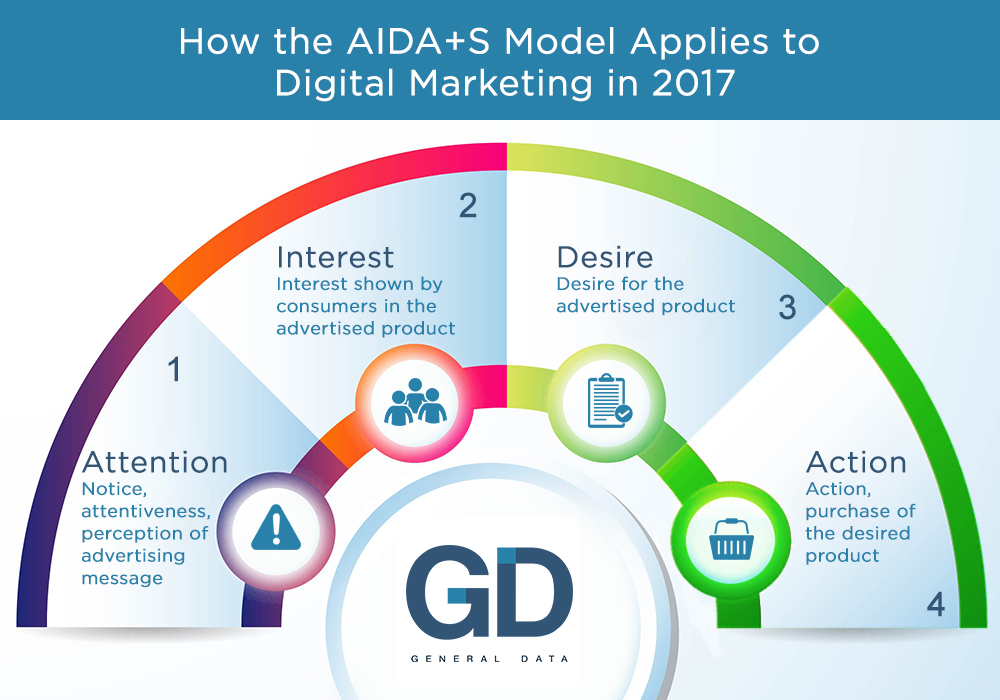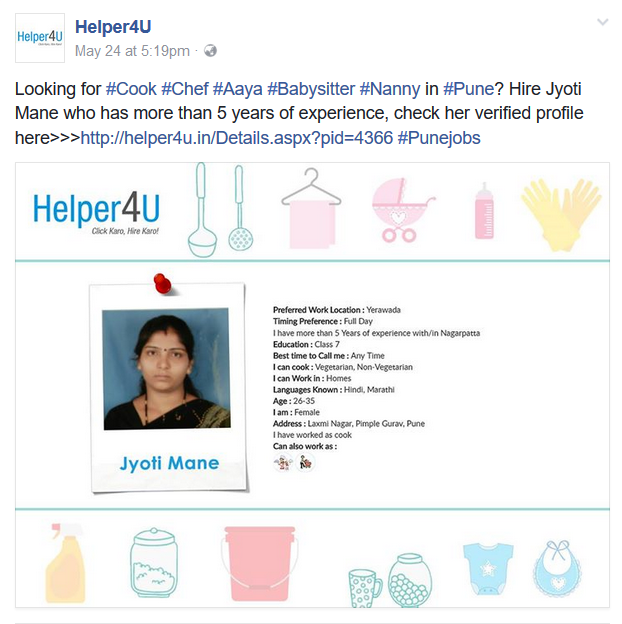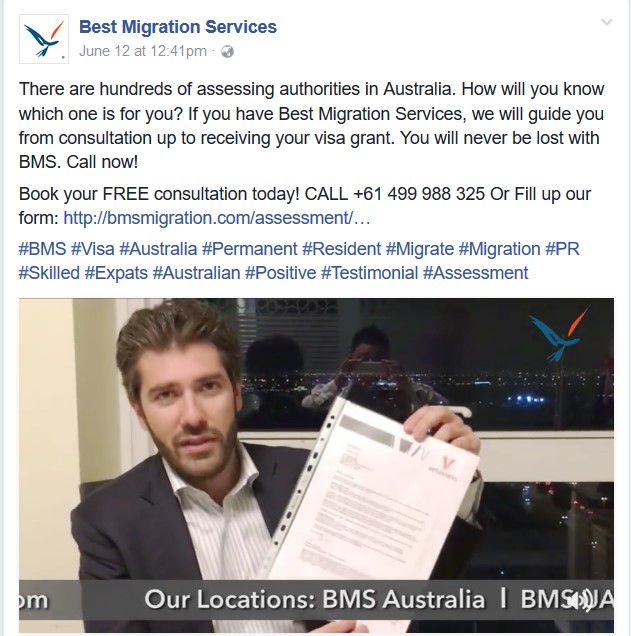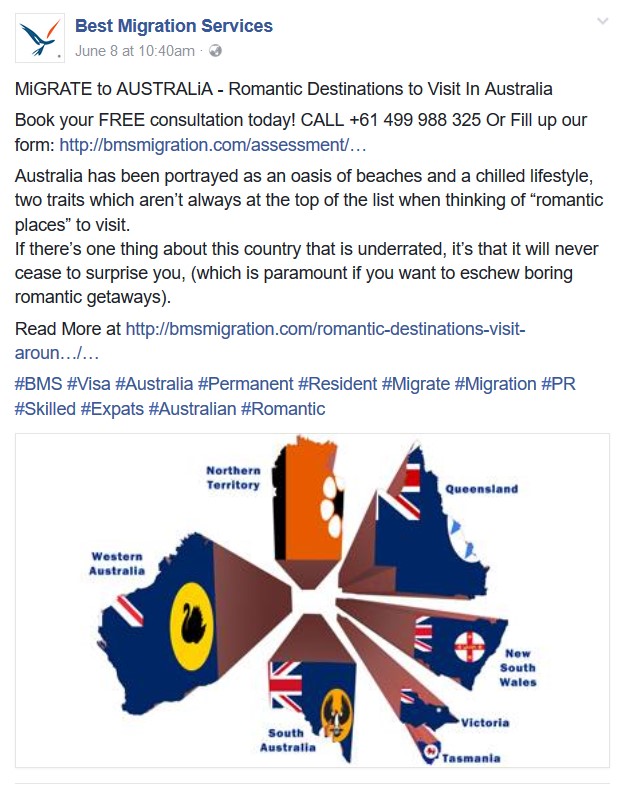Developed during the 19th century, AIDA – an acronym for Attention, Interest, Desire & Action – is a mantra that’s been widely adopted by the marketing & advertising industry. Over time, AIDA evolved into AIDAS, with the ‘S’ denoting ‘Satisfaction’.
AIDAS outlines the steps a customer goes through when purchasing a product or service – right from initial interaction with a brand to his or her post-purchase state of mind.
AIDAS is an important concept to keep in mind when defining marketing, advertising and sales practices. It helps fine tune different stages of interaction with prospective buyers, and highlights the importance of a win-win situation at the end of these interactions.

Breaking down AIDA+S
Attention:
The Internet is cluttered with all sorts of information, and brand communications are no exception. Attracting and gaining a consumer’s attention is a skill you need to master in order to make your brand stand out from the crowd. The maxim “Your first impression is the most important” in highly applicable to online marketing. But at the same time, consistently putting out quality content is essential to keep your customer engaged over long periods of time.
Several facets of Online Marketing must be used in tandem to draw consumer attention:
SEO:
SEO (Search Engine Optimization) comprises activities done to improve your website rankings on search engines, primarily Google. The primary factor to consider when carrying out SEO is writing effective, relevant Page Titles & Descriptions and unique content throughout the website. With the advent of mobile browsing, mobile responsiveness or standalone mobile websites are imperative to smooth user experiences across devices.
Creating a Google business listing, participating in inbound marketing, sharing content & images on related syndication sites can help you grab the attention of your target audience effectively.
Social Media:
In its heydays, social media was easy to leverage to grab consumer attention, when the space was still comparatively clutter-free. But since, hitting your desired reach organically has become a lot more difficult. Using proper #hashtags, easy-to-understand marketing collaterals, clear images, videos & sensible content can still be effective, but paid social media campaigns have become as effective if not more in meeting communication objectives.
Paid Search Ads:
Paid Search Engine Text Ads & Display Ads are undisputedly the quickest ways to reach your target audience. Search & discovery today usually begins on Google, and running text & display based ads make sense to invest in when market research on not only your own business but also your competitors is done right.
SEM (Search Engine Marketing) campaigns can amplify your reach over a small period of time, whether your objective is branding and visibility or conversions. Catchy text ads and effective marketing collaterals help in grabbing consumer attention effectively.
To learn about how General Data help brands leverage the above channels in Online Marketing, click here.
Example – Helper4U
Here is how Helper4U, an online database of Indian domestic helpers is trying to gain visibility by showing prospects their services, which they might require in the present or future. In this example, Helper4U exhibits their database of babysitters, making their offering more tangible by showing an actual babysitter’s photo and details. At a quick glance, viewers understand Helper4U can help them find a babysitter, and thus the post is effective in garnering attention. Using relevant hashtags help in categorical targeting. 
Interest:
Once you have gained the attention of your customers, it is time to keep them interested in your services and products. Here are few ways you can keep customer interest high:
- Regular activity on relevant social media platforms
- Tailor content to suit each individual social platform
- Initiate dialog instead of just trying to sell
- Post quality images, graphics & videos
- Conduct contests & promotional activities periodically
- Offer freebies or deals whenever possible
- Tailor content for mobile viewing
- Respond to all comments, queries, complaints & suggestions
- Post educational, helpful content like facts and DIYs
- Monitor interaction using social media management platforms like Hootsuite
To learn more about the above points, visit here
Example – Organic Farmers Co.
Organic Farmers Co. is an Indian seller of nutritional products like organic quinoa. We help them leverage social media to educate consumers about the benefits of the healthy, organic products they sell. Educative, relevant content helps generate interest in the brand and its offerings, increasing engagement and ultimately conversions. It’s important to note these posts are not ‘hard sells’, they’re authentic in their claims and aim to help consumers make better decisions in their daily routines. 
Desire:
Now that you’ve generated interest in your brand and offerings, the next step is to inculcate a desire to follow through and thereby convert your prospects into paying customers. Desire can be created in many ways, like showcasing positive experiences past customers have had after trying your product or services. Brands with deep pockets often endorse celebrities, sports personalities and online bloggers and influencers.
When influencers & satisfied consumers subscribe to and endorse your brand, it counts for a lot in building trust and desire. Always remember, satisfied consumers are your biggest brand advocates. Word-of-mouth is so effective because consumers tend to trust the advice of people they know on a personal level.
Example – Best Migration Services
Best Migration Services helps people determine whether they’re eligible to migrate to Australia and guides them through the entire immigration process. They use Social Media to communicate success stories and testimonials of previous clients. These go a long way in convincing prospects looking to settle in Australia that BMS is the perfect service for them. Testimonials can be thought of as an indirect word-of-mouth marketing tool, driving business promotion organically.

Actions:
By now, we have managed to gain our customers’ attention, generated interest, and finally, they now desire our products and services. This is all for naught if they don’t finally convert i.e, perform an Action.
This action can be thought of the final conversion. It can be to subscribe to your services, fill up an inquiry form, make a product purchase, etc. To trigger this, your communication needs to have a loud & clear “Call to Action”.
Here are a few tips to structure your Call-To-Action:
Use verbs:
Eg: Encouraging online shopping - “Buy Now,” “Shop Now,” or “Order Now”
Eg: Promoting ebooks, newsletters, etc - “Subscribe Now”, “Download Now”
Embed words that will provoke emotions & enthusiasm
Eg: “Buy now & get 20% discount on your next purchase!”
Eg: “Sign up now to start saving”
Your CTA should give them a reason to take the desired action
Eg: Call Now For a Free Consultation
Leverage Fear of missing out(FOMO)
Eg: “Shop today, sale ends today at midnight!”
Eg: “Offer available till stock lasts”
For detailed information on how to formulate your Call-To-Action, have a look here.
Example – Best Migration Services
Here, Best Migration Services is targeting wedding couples that are planning their honeymoon aboard. By offering Free Consultation, BMS shows a willingness to offer Value Added Services, for no extra cost. Such calls encourage a customer to opt for your services.

Satisfaction:
You’ve finally completed your sales funnel. You managed to convert your prospect into a paying customer. But it’s not over yet. Brands that overlook customer satisfaction don’t last very long. Word gets around. Customers need to be satisfied with what you’ve given them if you want them to recommend you to others or remember you the next time.
It goes without saying that this depends on the quality of your products and services. Assuming your quality is usually up to the mark, occasionally mitigating circumstance result in unhappy customers.
What if the customer is not happy with your service or your product. Maybe you shipped the wrong product by mistake or it was damaged in transit, or your customer had a bad experience with your servicing. The disgruntled customer is likely to contact you. This is the defining moment that portrays your brand ethic and culture and seeks to repair a fractured relationship with a customer. Be polite, understand their problems, and assist them. Do everything you can to make sure they don’t leave unsatisfied when they have a legitimate reason to be unhappy. It’s very easy to lodge a complaint nowadays on social media, consumer forums, etc. One simple Facebook post or tweet can severely dent your online reputation.
So make sure your customers are happy and satisfied even after sales.
Happy Customers are directly correlated to a healthy, longsighted business!
